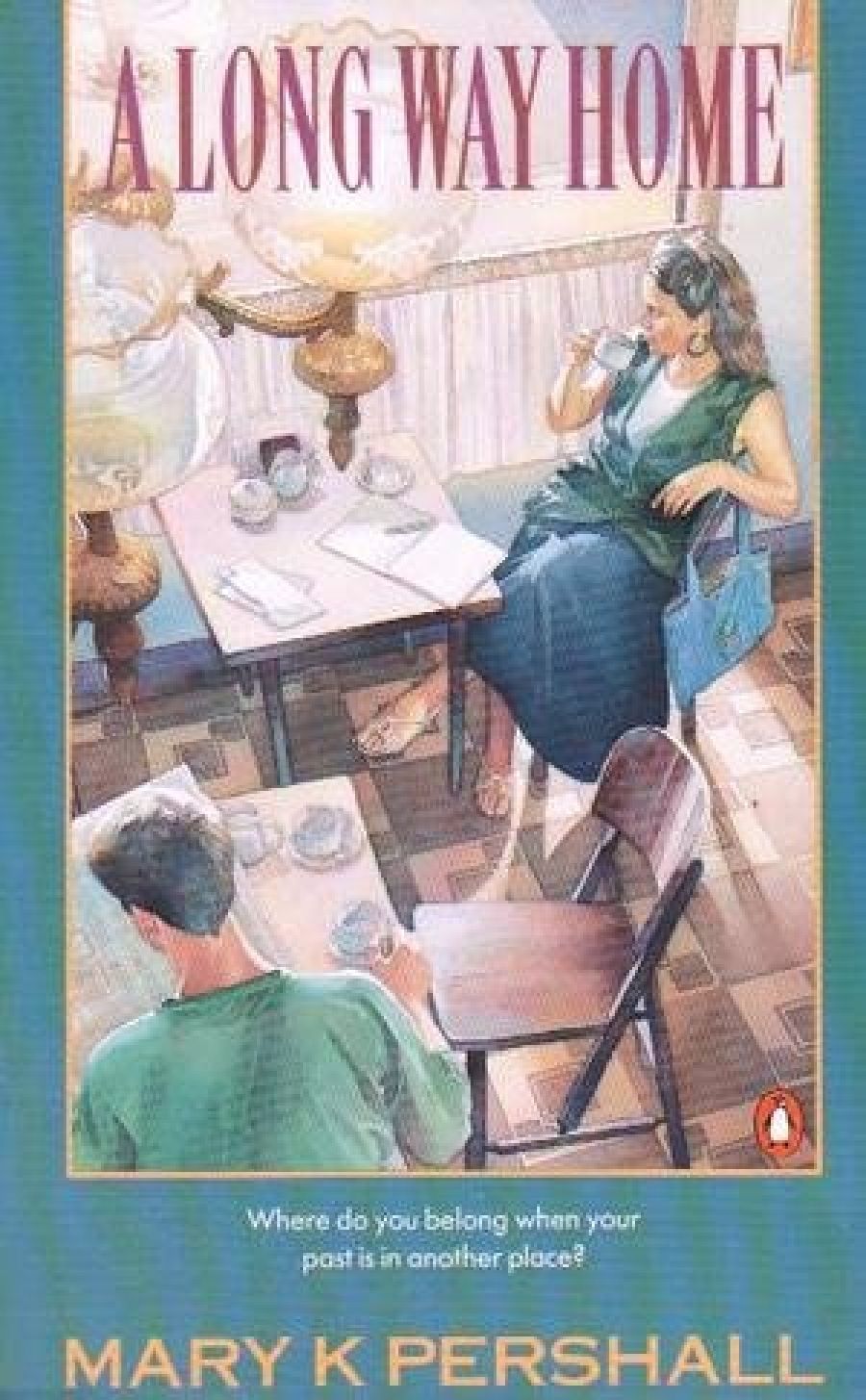
- Free Article: No
- Contents Category: Fiction
- Review Article: Yes
- Article Title: Book’s message confused by its packaging
- Online Only: No
- Custom Highlight Text:
Who does this book think it is? Fiction or autobiography, for teenagers or adults? Every book has an idea of its own identity, established by its author, editor, and publisher, and proclaimed through its cover, the style and form of the text, and the accompanying publicity. A Long Way Home seems to suffer from an identity crisis.
- Book 1 Title: A Long Way Home
- Book 1 Biblio: Penguin, $14.95 pb
Beyond these hurdles is a small and simple story about Annie Skasey, a young woman from Iowa torn between living in Melbourne, her home for most of her adult life, and returning to the United States. In Australia’s favour are friends, a lover, a job she enjoys, the city itself, and her favourite cafe (see front cover). On the side of Iowa are ageing parents and childhood ghosts, both presences powerful enough to override the logic of preference.
This is largely a story about storytelling. The narrative is interwoven with the tales that families tell about births, with the jokes that Annie tells her lover, Len, and with Annie’s yearning to return home for the ‘visiting’ with people, the sitting in the sun and gossiping about neighbours and friends she has known forever.
The narrative develops through flashbacks to Annie’s growing up, alternating with her present. The childhood reminiscences have something of the flavour of Jessica Anderson’s tales of a Queensland childhood, but often lack the poignancy and potency of Anderson’s work. One of the focal points for her flashbacks is the group of girls who were the elite in her school year. Their role in Annie’s life is evoked clearly, yet the incidents used to illustrate this (such as the allocation of roles in the school play) remain small in scale without attaining their rightful weight and value.
At times Pershall struggles to make the link between activity and recollection. ‘As I aim my hairdryer at my head I feel around me, comfy as a doona on winter’s night, all the people I have collected in this city ...’ is followed closely by ‘As I bend the ends of my hair around a brush and blast them into a curve with the hairdryer, I curse the Whitlam government for handing me a resident visa ...’
Flashes of clarity show Pershall’s capabilities for insightful depiction. The dynamic between Annie and her clever, greedy sister Liz is fascinating at times, such as when Annie discovers that Liz has convinced everyone (including Annie herself) that Annie doesn’t like ice cream. ‘Standing there on the warm church steps that June afternoon, ice cream melting on my tongue, I knew with a terrible certainty that for six years my family had conspired against me.’ The melodrama is laced with enough self-effacing humour to make it work well in its context.
There are moments when the uncomfortable level of honesty makes one wince, such as when Annie describes scenes from Fawlty Towers to Len. I suppose, too, that some women really do think of the penis as ‘a happy little animal that loves me, like the kittens back on the farm’. Yet extracts like these are clichéd and do not seek to rise above their mundane nature; they also force an intimacy with the reader that is embarrassing, as the jokes between lovers often are to outsiders (and in retrospect to the people concerned).
This domestic telling is sometimes too sweet and sometimes a little rough around the edges. It is still easy to swallow. The reader is even spoon-fed by being told the dates for each section of text. These diary-like headings are generally unnecessary, however, as the author could have relied on the text itself to explain its position in time.
The division of the book into Book One and Book Two is puzzling: the second part is only fifteen pages long to the first part’s 279 pages. There is a major narrative shift that demands a marker, yet the complete story seems too slight to be broken up in this way. Titles for the two sections (such as ‘Away’ and ‘Home’) would have seemed more appropriate.
It is the question of ‘autobiographical fiction’ that is most troubling. That label forestalls all the usual questions about the link between the author’s life and her writing. Invalid those questions may be, but Pershall has taken the fun away by not permitting us to consider the possibilities. Under the definition of autobiographical fiction the author is also absolved of guilt for all decisions concerning plot, for which in fiction she would normally be responsible. It’s provocative, but it’s cheating.


Comments powered by CComment